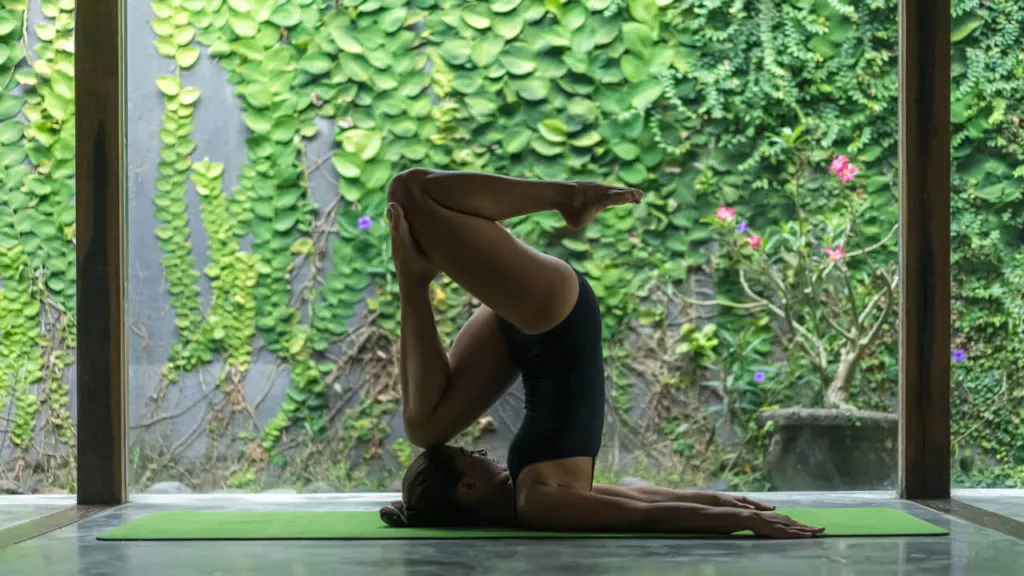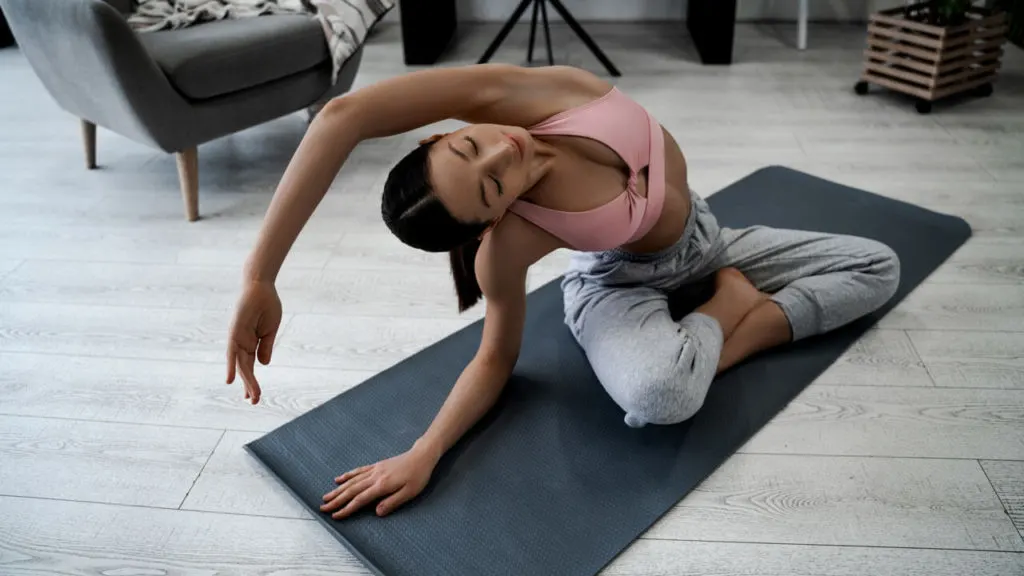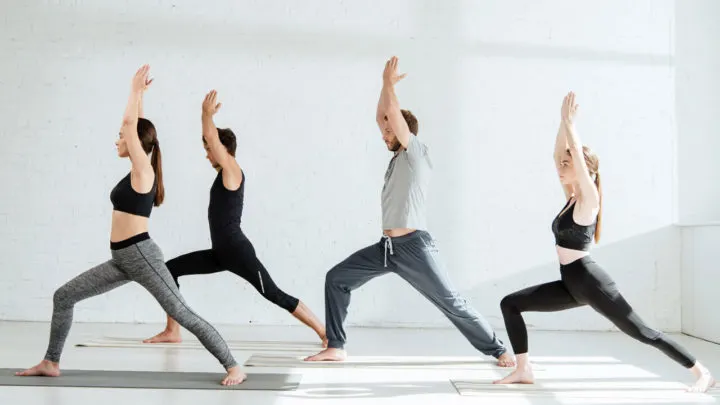Are yoga practitioners worse for over practicing than your average gym rat? Maybe! Gym goers who lift heavy and workout hard know that recovery is essential to building strong muscles and having a healthy body that will continue to lift and build muscle. But with the trend of #yogaeveryeveryday and #yogaeverydamnday continuing to trend on Instagram, are yoga practitioners being influenced to practice every day? Should you practice every day? Is there a thing as too much yoga?
I get down to the details and answer these questions that will answer how often you should do yoga so that you can continue to feel great in your mind, body, and soul, on a daily basis that is just as much about the physical as it is the mental aspect.

What are the benefits of practicing yoga?
It’s no secret that there is an abundance of benefits of yoga, with more reasons to step on your mat becoming clearer and backed by science all the time. The most commonly known benefit is no doubt flexibility, but building strength, physical balance, and posture are other physical benefits too. When it comes to how you feel mentally after practice, there’s a reason for that feel good mood. Lower levels of stress, anxiety, better sleep, self-esteem, and overall improved mental health are all linked to practicing yoga. How many more reasons do you need to step onto your mat more often? Or even just to keep up a regular yoga schedule?
What is your reason for practicing yoga?
You’re not alone if you’re looking to yoga for a specific reason, beginner or not. Perhaps you believe that flowing it out will help you lose weight, maybe it’s strictly for your mental health, or to find some peace in your day, to gain strength, or improve your flexibility. Maybe it’s for a combination or your purpose for practicing has changed since you first started. Depending on why you’re practicing yoga can determine how often you practice, what style of yoga you choose, and what part of yoga you practice.
“What part,” you ask? Yoga in the west is very much associated with rolling out a mat and moving through physical poses, otherwise known as asana, which is just one part of yoga. But there are actually 8 different parts, or limbs, of yoga. Meditation is another well-known limb, as well as pranayama, which is breathing (or breath control). But concentration, observances, abstinences, withdrawal of the senses, and samadhi (enlightenment), are the other remaining limbs.
Yoga, as cheesy as it sounds, is truly a lifestyle and an ongoing practice and so should be practiced every day, as often as possible. But for the purposes of this article, I assume you’re here to know how often you should practice the physical practice of yoga. Regardless of your reason for practicing, it’s more or less the same but may differ slightly.

How much yoga is too much yoga?
Truthfully this question and how often you should do yoga can only be answered by you based on your physical ability, mental capacity, schedule, and ever-changing stress, anxiety, and overall health. But I bet you want to know, can yoga be practiced every day? In short, yes…but in reality, you probably shouldn’t.
Now I’m not here to tell you exactly how often you should or shouldn’t, but I am here to encourage you to be mindful. Depending on what style of yoga you’re practicing, you may need breaks or longer breaks between practices. If power yoga is your jam then doing it every day is, in my opinion, too much! Power yoga can be very intense and even though you are stretching your muscles through your practice, your body will still need time to rest and recover. Perhaps an option the next day could be Yin or restorative, even Yoga Nidra! Yin is a great way to keep up your yoga practice day to day, without putting such intense stress on your muscles and joints.
So the question is not how much yoga is too much, but how much feels good for your body. Remember that just because you have a plan or a yoga class in your schedule doesn’t mean your body feels like doing it. And especially for women, our menstrual cycle can have us with more energy some days or weeks so you can practice more, or more intensely.
Too much physical yoga is when your body is recovering and you’re forcing yourself to continue practicing and pushing through. Recovery, even in yoga, is a must. Aim to have a minimum of one full day off of yoga once a week of any kind, yes, even Yin, as it still puts stress on your muscles.

How long or short should your practice be?
There’s no secret number here. Once again, it all depends on how your body and mind feel. Some days stepping on the mat for an hour and a half flies by and feels amazing, another day a simple 15 minutes is all you need. Just because most yoga classes are an hour long doesn’t mean that’s the amount of time you need to practice in order to reap the benefits. Length is not key, but consistency. Keeping up your yoga practice, no matter how long or short, will have you feeling better mentally and physically than it will practicing for longer periods of time. At the end of the day, it’s totally up to you!

How to Know What’s Right for You
1. Listen to Your Body
As mentioned above, listening to your body is key for knowing if, what style, and how long you should practice yoga. Listening to your body means noticing your energy levels, how sore (or not sore) you are, checking in on your stiffness and tightness, and how antsy you are. If you’re trying to shake off energy from being antsy a power or Vinyasa class of a longer length might do the trick. If you’re feeling lethargic but still feel the need to move, try a slow flow or Yin class.
2. Listen to Your Mind
Your mind plays just as big of a role in determining whether you should move your body as much as your body does! Movement is a big part of mental health so even if you’re having a day feeling like absolute shit and the last thing you want to do is move, moving your body will most likely help. Again, choose a style and class based on your mood. If you’re feeling particularly irritated, trying out a new yoga style or a class with a new teacher may not be ideal, so stick with what’s familiar. If you’re feeling like you need a change in your routine, then it’s time to shake up your regular classes.

3. How often should you practice yoga based on what you’re trying to achieve
For becoming more flexible: A more frequent and consistent yoga practice is key for flexibility. Aim for 3-5 practices a week, of any length. Of course, the more stretching you do, the more flexible you will become! Keep in mind that while practice will help your flexibility, some bodies just aren’t as flexible as others. Some will simply take more time, some just won’t reach the flexibility of that Instagram yoga influencer. Focus on twists and your hips and hamstrings for the most noticeable results in flexibility.
For building strength: In order to strengthen your muscles, it’s not about how often you practice but what kind of yoga style you practice. Aim for 2-3 times a week of power yoga, Ashtanga, or Bikram. which gives your body ample time to recover between sessions. Personally, I think yoga is a great addition to any weight training you do too and if your main focus is to build strength, you really should focus on weight training outside of just yoga. To help your body recover between weight training sessions, aim for more relaxed styles like a Vinyasa flow, Yin, or restorative.
For balance: For better balance, practice every day! Not necessarily in a yoga class, but simply when you’re standing. Tadasana (mountain pose) will ground you and help you feel into all 4 corners of your feet and standing straight will engage your core, a necessity when improving balance. Other balancing poses to try in your practice include dancer, half-moon, warrior III, and eagle.
For mental health: For lower stress or anxiety levels, a calmer mind, or to find more peace and stillness, yoga can be practiced every day. It’s recommended to practice a mix of physical and meditation for the best results, once again not practicing so much that you overload your body and end up more tired, exhausted, or depleted. Yoga for mental health should help you feel more energized and rejuvenated.
At the end of the day, yoga is not about getting results. I understand that this is what many people are after when practicing yoga, even I started yoga hoping to lose weight! Yoga is about feeling good in your mind and body and how often or little you practice is based on what feels good to you in order to live a life that is balanced for your health, physical and mental. If there are other benefits, that’s fantastic and is wonderful to celebrate.
What’s next?
- Elevate your yoga practice to and begin to take your practice off of the mat in my Journey Home 30 day yoga adventure.
- Crave personal one-on-one attention? My yoga privates – Sacred Exploration – and coaching help you to uncover your confidence and courage.
- Practice for free with me on YouTube!

